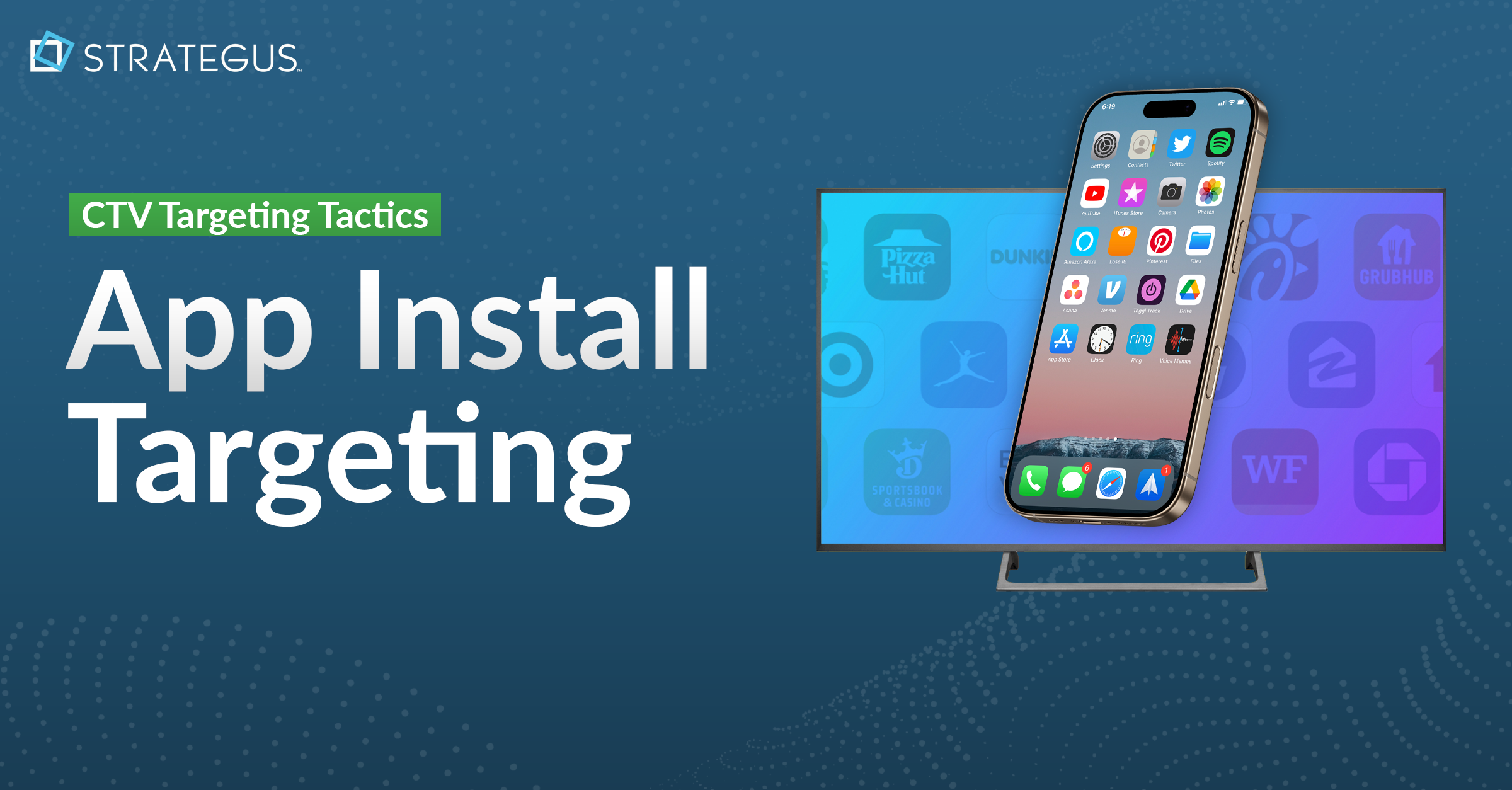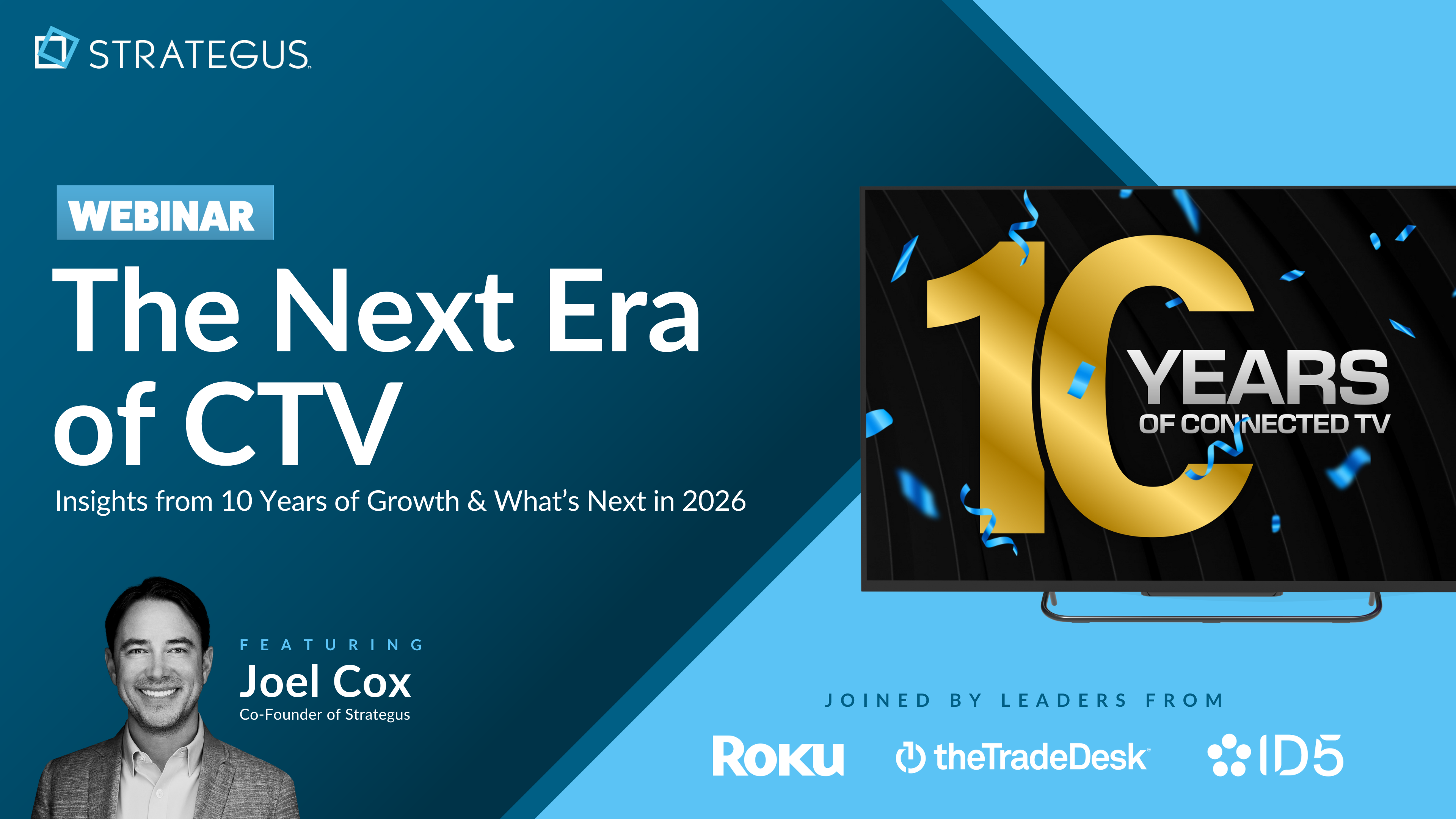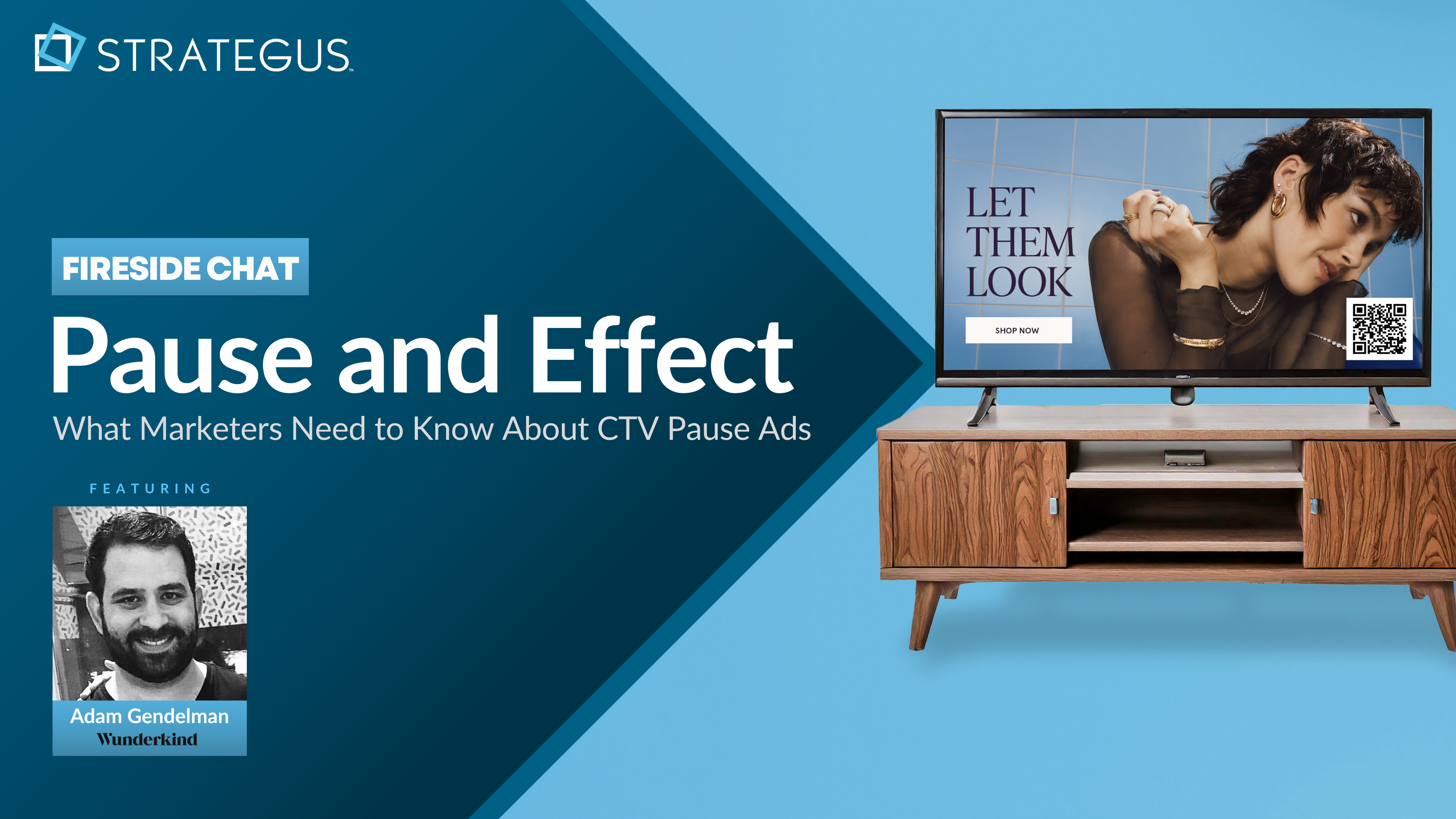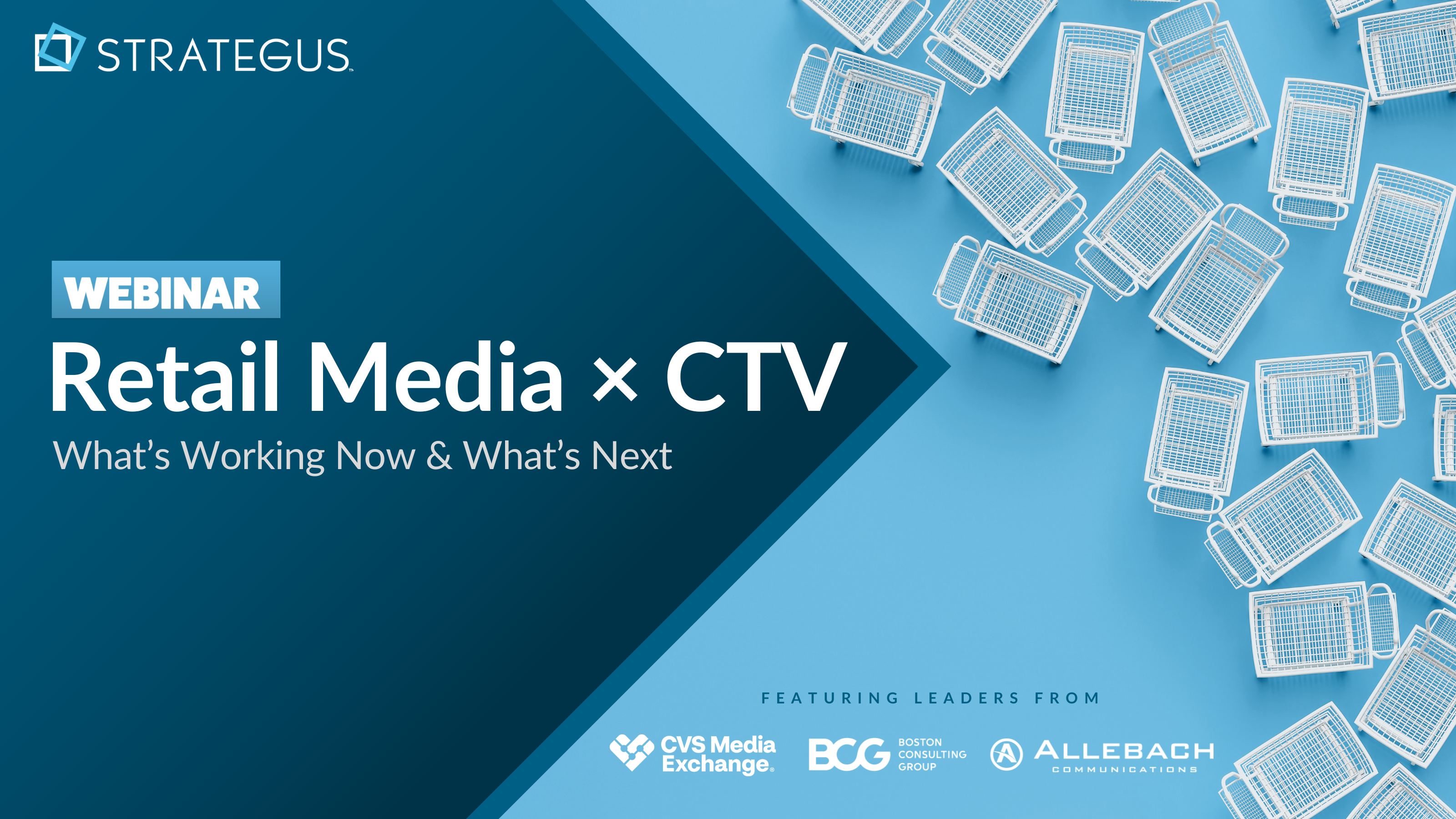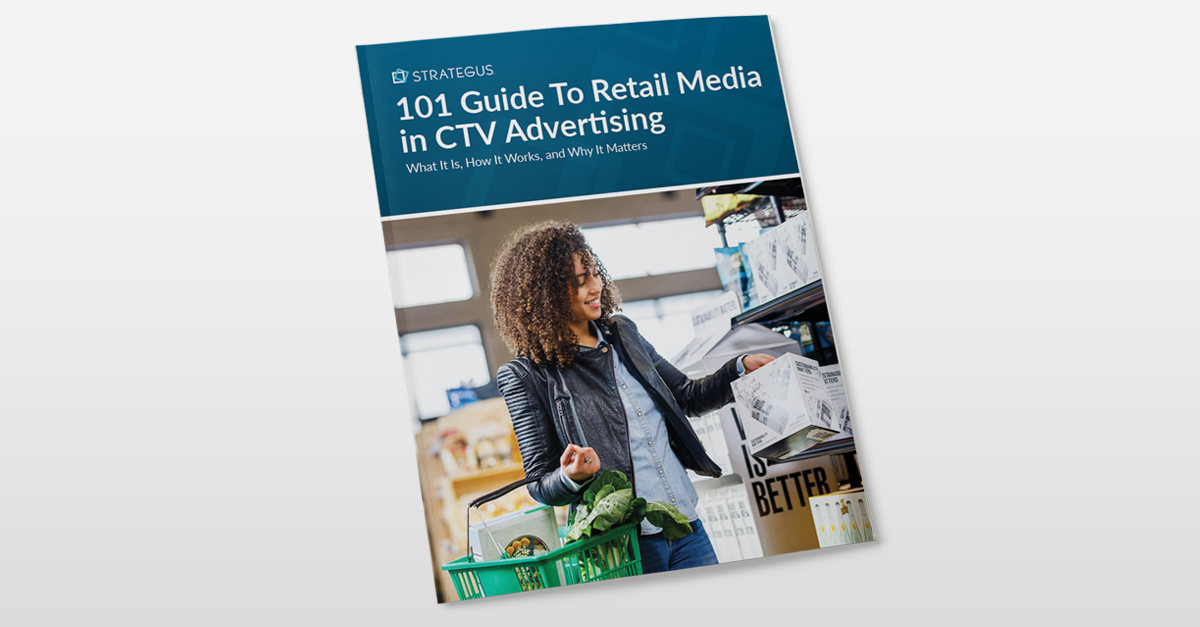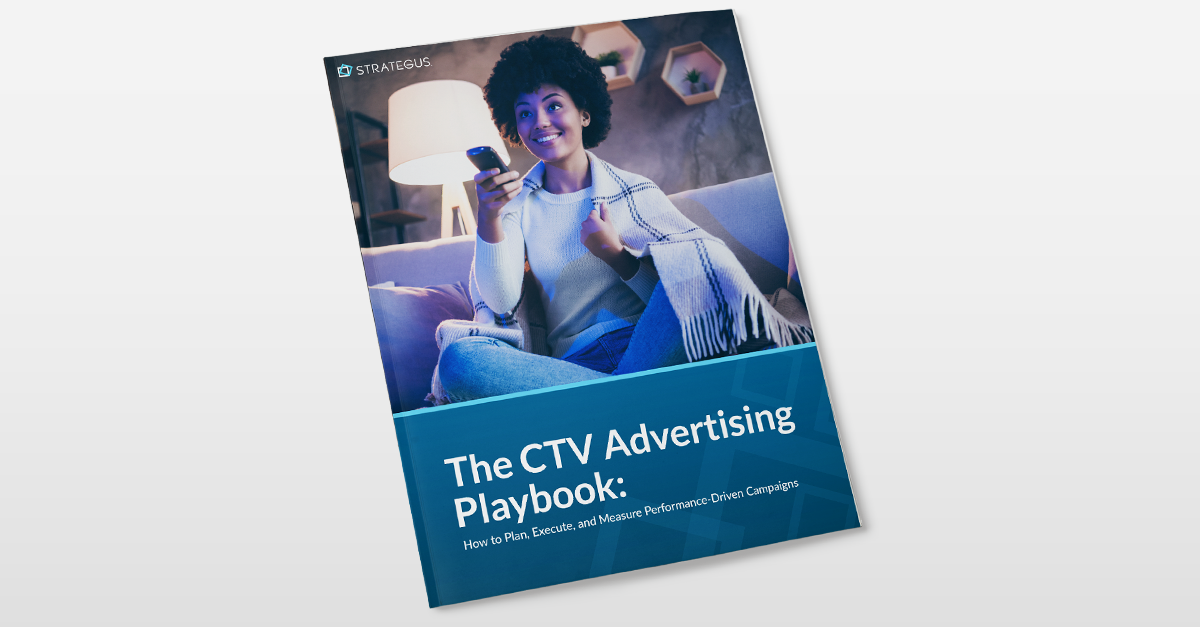- Home
- Strategus Blog
- The Rise of Programmatic TV Advertising
The Rise of Programmatic TV Advertising
 Andy Dixon
Andy Dixon
3 minutes read


Instead of Madison Avenue and bloated, incumbent networks calling the shots, it’s now the invisible hand of the market forcing sellers to do right by buyers. Consumer demand for relevance and a better experience has compressed advertising best practices into today’s high-tech and better-behaved moral new normal.
Relevance
Consumers intuitively know how they do not want to be treated: No more hitting them over the head with abusive over-exposure, and no more spraying irrelevant garbage to the masses and praying that a few will buy the dog food. That worked for the networks, brands and agencies for many years, not so much for the viewers.
Data-driven advertising, micro-targeted to households and individuals with messages tailored to their tastes and habits – across thousands of channels and devices – is what consumers want. With no sports, a distaste for news and less mind-numbing ad repetition to mollify them, they now expect nothing less than meaningful, respectful relationships with their programming and brand engagement.
Thanks to digital streaming, network TV can no longer count on viewers being where they want them and when. Unless it’s the Super Bowl, it’s wrong to expect viewers to plan their lives around the networks’ schedules. Advertisers will have to find consumers, instead of the other way around, and with programmatic micro-targeting, they can. Advertisers can earn and keep those relationships by delivering a positive customer experience.
Following people around and monitoring their online behaviors seemed a bit creepy at first. But consumers have gotten used to their digital exhaust being tracked and monetized, and have tacitly agreed to trade some measure of privacy for relevance and free content. With this acceptance, a moral covenant has evolved between buyer and seller: use that personal data to serve ads that matter, but protect and treat that data with discretion and respect. New privacy laws are seeing to this, but programmatic CTV/OTT ads in particular are evolving toward more quality consumer experience and intimacy, which in turn builds brand trust. The earning of that trust benefits advertisers, thus the responsibility for keeping that trust lies with them.
Programmatic is based on audience targeting, not content targeting toward popular programs. The decisions behind automated, real-time bidding for inventory rely on layers of real data on individual buyer behavior instead of the demographic assumptions of what group types might watch a certain show. Programmatic is not only relevant, but immediate, serving ads of interest to likely buyers.
Reverence for people’s time and money is paramount. With relevant ads being served with moderate frequency across the long tail of omnichannel programming, why would people want to pay for multiple subscriptions to avoid the ads? It seems morally wrong to force people to pay for a single channel with so many choices out there. Take a clue from the cable companies who rank down there with congress and cockroaches in consumer favorability studies. It’s too late for them to start building trust now, and the next subscription-based content platform may be too late to the game as well.
To read more, click here.

Andy Dixon is a seasoned Content Writing Specialist at Strategus, renowned for his expertise in creating engaging and impactful digital content. With over a decade of experience in content creation, Andy has honed his skills in a variety of niches, ranging from technology and marketing to education.
Strategus is a managed services connected TV(CTV) advertising agency with over 60,000+ campaigns delivered. Find out how our experts can extend your team and drive the result that matter most.
Talk to an Expert
Seeking a Custom CTV Strategy That Delivers?
What to read next
App Event Tracking: Tie Mobile App Activity to CTV Campaigns
Let’s say you’re running a CTV campaign for a personal finance app.
5 minutes read

Stop Guessing Who Your Audience Is — Let Their Apps Tell You
Connected TV (CTV) targeting often falls in one of two camps.
8 minutes read
See Who Bought After Your Ad + How Much They Spent
You can’t improve what you can’t measure. And for years, that’s been a major problem with TV advertising.
4 minutes read

First-Party Attribution: Match Ads to Sales With CRM Data
The value of first-party data continues to grow.
7 minutes read



